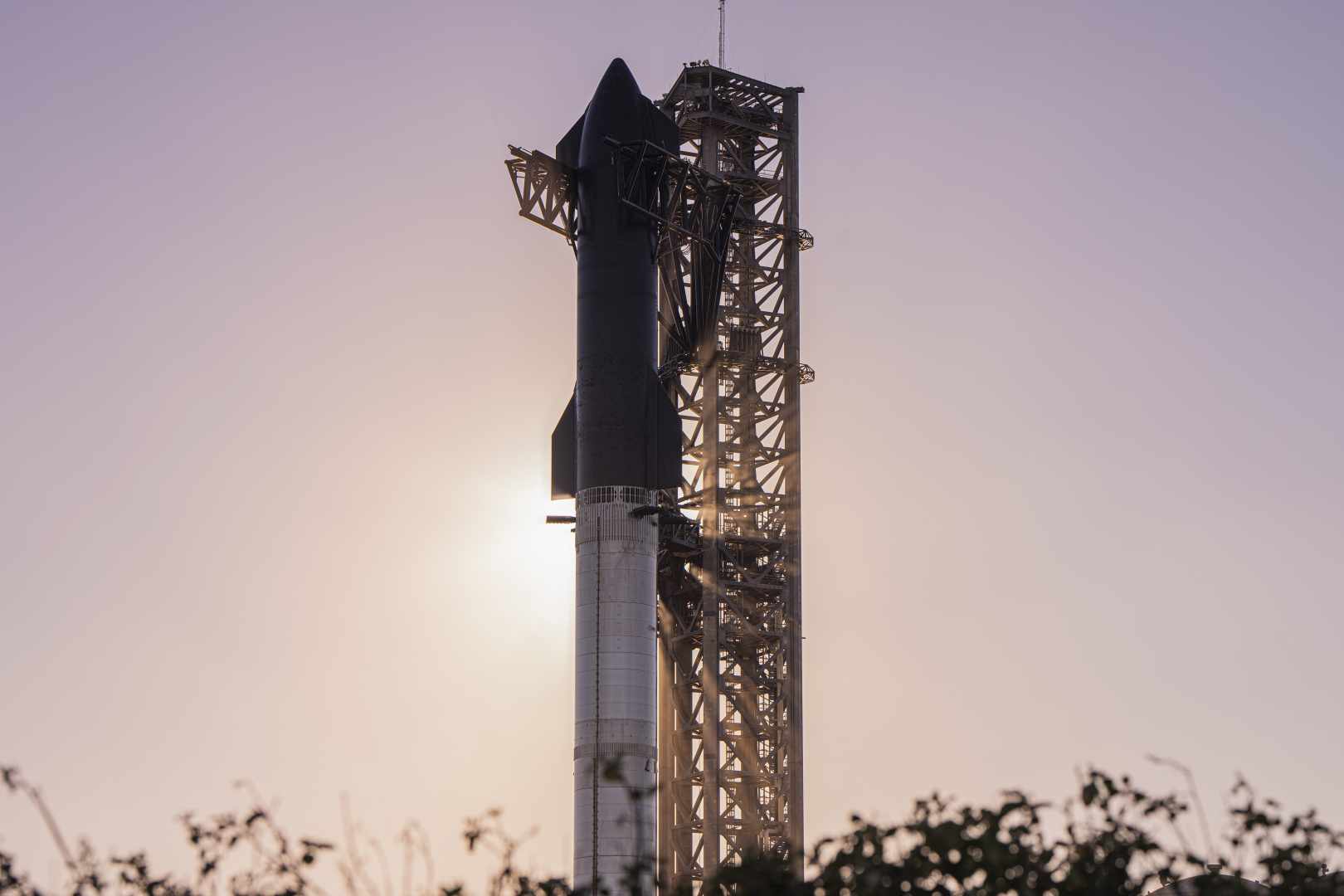
SpaceX continues to target a two-hour “window” from 7 a.m. until 9 a.m. CST Friday, 17 November, for the second Integrated Test Flight (IFT-2) of its fully integrated Starship/Super Heavy stack out of Starbase in Boca Chica, Texas, following last month’s final closing-out of Federal Aviation Administration (FAA) safety concerns and the completion of a U.S. Fish and Wildlife Service (FWS) environmental impact review earlier this week, which led to the granting of launch license certification on Tuesday. “As is the case with all developmental testing,” the Hawthorne, Calif.-headquartered launch services organization noted on its website, “the schedule is dynamic and likely to change.”
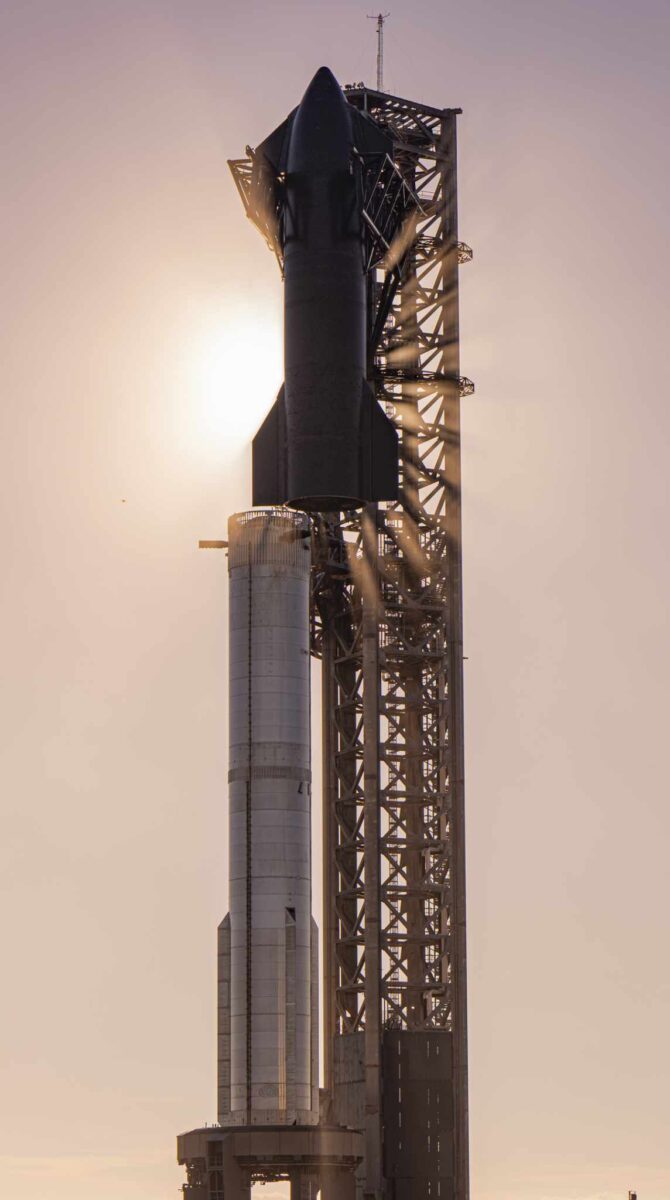
On Thursday morning, the 164-foot-long (50-meter) Ship 25 was mounted atop the 233-foot-tall (71-meter) Super Heavy, topping-off an immense stack whose height stands taller than the Space Launch System (SLS) or the Apollo-era Saturn V.
“This is another chance to put Starship in a true flight environment, maximizing how much we learn,” SpaceX tweeted. “Rapid iterative development is essential as we work to build a fully reusable launch system capable of carrying satellites, payloads, crew and cargo to a variety of orbits and Earth, lunar and Martian landing sites.”
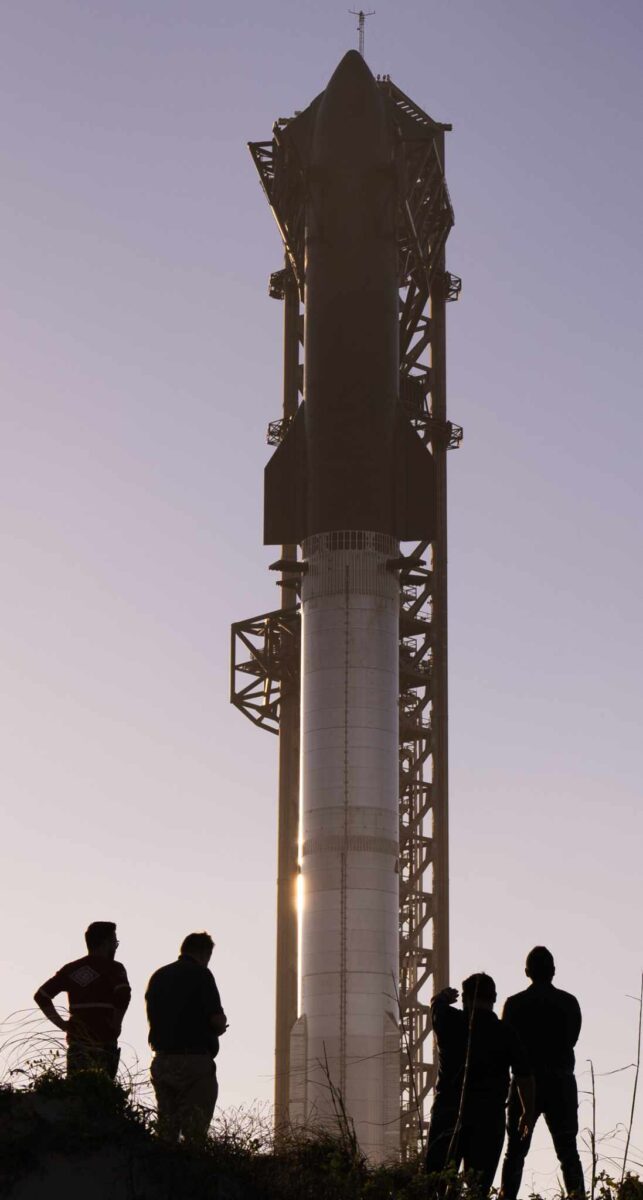
The long-awaited second outing of the 394-foot-tall (120-meter) booster comes after many weeks of speculation, with even SpaceX Senior Director of Human Spaceflight Programs Benji Reed remaining non-committal following questions at the post-Launch Readiness Review (LRR) briefing ahead of last week’s CRS-29 Cargo Dragon mission to the International Space Station (ISS). Mr. Reed indicated only that SpaceX was aiming for a launch in the mid-November timeframe.
On its initial launch in April, the Starship/Super Heavy ascended from Boca Chica under 16.7 million pounds (7.5 million kilograms) of thrust from its 33 Raptor engines, the highest liftoff impulse of any orbital-class booster in history. But after suffering multiple engine failures immediately after liftoff, the behemoth was remotely destroyed at an altitude of about 24 miles (39 kilometers) by the Autonomous Flight Safety System (AFSS) and a subsequent Federal Aviation Administration (FAA) investigation into the mishap was expected to take several months to complete.
According to SpaceX, “numerous lessons” were learned from April’s mishap, which—in addition to the loss of the vehicle at altitude—also produced substantial damage to the Boca Chica launch facilities. Efforts have been implemented “significantly reinforce” the pad foundations and integrate a water-cooled steel flame deflector, together with other upgrades. A new electronic Thrust Vector Control (TVC) system will feature “fewer potential points of failure” and greater energy efficiency over traditional hydraulic systems.
More recently, in July the second Starship booster (Booster Nine) was transported to the pad for tests, with an expectation that it will loft Ship 25 on a transatmospheric flight closely mirroring the trajectory envisaged for its unsuccessful April mission. It underwent a successful Static Fire Test a few weeks later and in late October SpaceX teams conducted a single-engine test to demonstrate Starship’s deorbit burn capability and loaded the entire vehicle with propellant in a flight-like launch-day rehearsal.
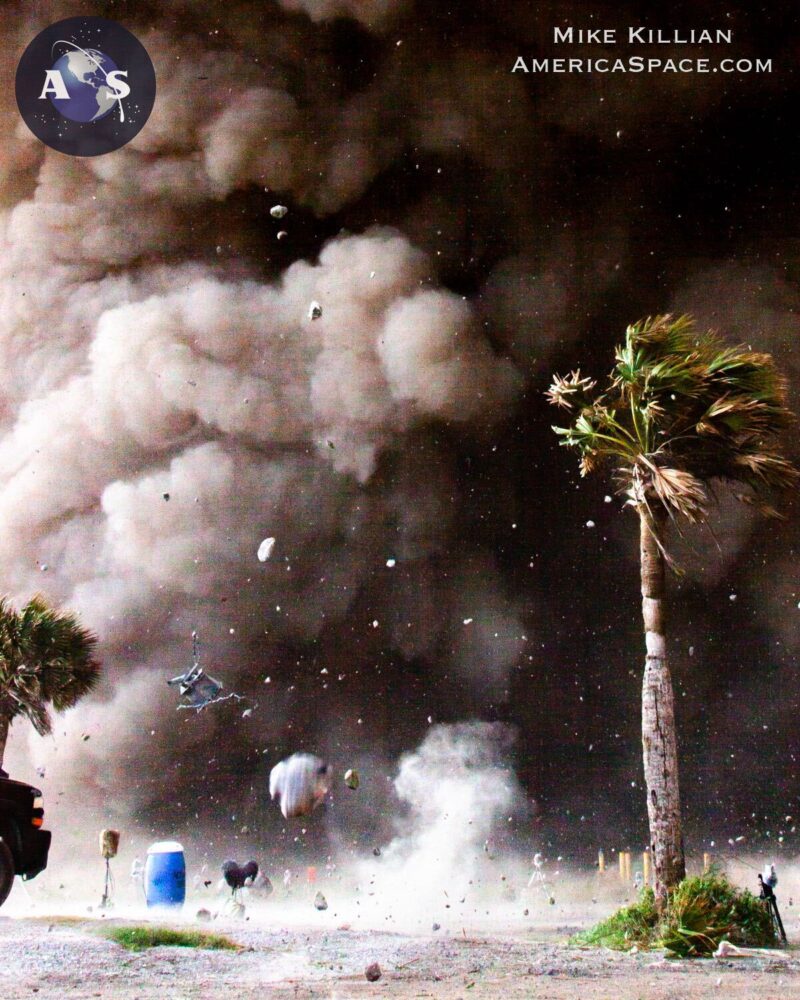
At T-2 hours tomorrow morning, the SpaceX Launch Director will conduct a poll of the team, ahead of authorizing the loading of more than ten million pounds (4.5 million kilograms) of liquid oxygen and liquid methane into the tanks of the Super Heavy and Starship. Fueling of the booster will commence at T-97 minutes, with that of the Starship expected to be underway by T-77 minutes.
Chill-down of the Raptor engines on both stages will occur at T-19 minutes and 40 seconds. Three seconds prior to liftoff, the Super Heavy’s Raptors will ignite, with “Excitement Guaranteed” at T-0.
The 233-foot-tall (71-meter) Super Heavy will lift the stack uphill for the opening two minutes and 39 seconds of flight, before the Starship’s own Raptors ignite in a so-called “Hot Staging” separation event. “Starship and Super Heavy are being upgraded to use a separation method called hot staging,” SpaceX tweeted earlier this summer, “where Starship’s second-stage engines will ignite to push the ship away from the booster.”
Returning homeward, the discarded Super Heavy will execute a 54-second boostback burn, slowing to transonic speeds at 6.5 minutes after liftoff, then performing an 18-second landing burn for a vertical splashdown in the Gulf of Mexico, some 20 miles (32 kilometers) off the Texas Coast, a little more than eight minutes into the mission.
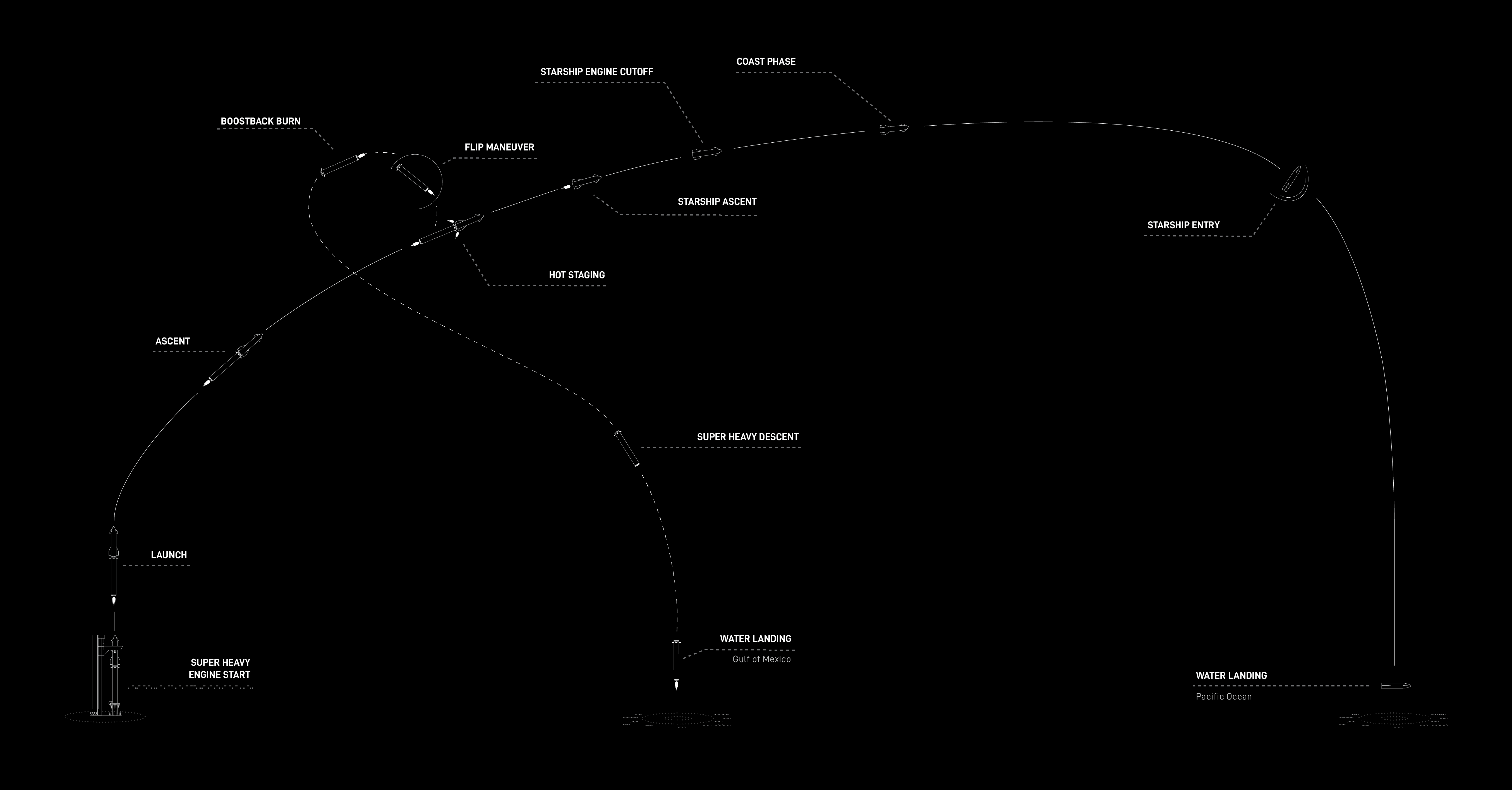
Meanwhile, after separation from the booster, the Starship will ignite its Raptor engines for a little less than six minutes, before shutting down and coasting three-quarters of the way around the planet for the next 68 minutes. Like the Super Heavy, it is not intended for recovery on this inaugural test flight and will splash down—for what SpaceX describes hopefully as “an exciting landing”—in the Pacific Ocean, likely about 60 miles (100 kilometers) northwest of Kauai in Hawaii.




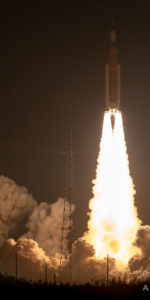

One Comment
Leave a ReplyOne Ping
Pingback:SpaceX Flies First Mission of Weekend Triple-Header, as Starship Stands Ready to Go - SPACERFIT